The Luxor Top Ten
The capital of Egypt for the great pharaohs of the New Kingdom, more than a thousand years after the Old Kingdom chaps built the pyramids near their capital of Memphis, Luxor is home to more wonders of the world than one can shake a stick at.
And, while the environment on the streets and around the major tourist sites can leave one longing for the tranquil, meditative charm of tourist Cairo, the history, from the fascistic, bombastic and grandiose through to delicate, optimistic paintings, is wonderful.
Here’s my ten favourites from our time in the city that Homer referred to as “hundred-gated Thebes”. I’d love to know yours.
1: Deir al-Medina
Tomb-robbing was a major issue throughout Egyptian history, so, when the New Kingdom pharaohs came to designing their tombs in the Valley of the Kings, they created an isolated village for the Valley workers, out in the desert, to prevent them and their families from sharing their secrets.
Now in Ancient Egypt, most buildings for daily life — as opposed to religious edifices and tombs — were built in mudbrick. So there are very few sites that give any indication at all as to how daily life was for ordinary people.
Deir al-Medina is about as close as it gets. These scribes, artists, artisans and masons were not, in fact, ordinary Egyptians. They were a unique, middle-class elite who led very special, and sequestered lives.
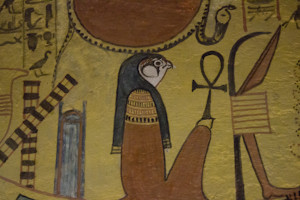 Seeing the houses they lived in, complete with bread ovens and cellars, along with the mini-pyramids that adorned their funeral chapels, is pretty special. And the paintings in their tombs are better than anything they produced for the pharaohs.
Seeing the houses they lived in, complete with bread ovens and cellars, along with the mini-pyramids that adorned their funeral chapels, is pretty special. And the paintings in their tombs are better than anything they produced for the pharaohs.
K.A. Kitchen’s classic work on Ramses II has incredible detail on the everyday lives of people in this village, up to and including which family lived in which house, and even – thanks to preserved texts — what some of them took for their packed lunches and fought about.
Like most sites around Luxor, Deir al-Medina is arguably too heavily restored, but the tomb of Inherka has the most beautiful paintings we’ve seen to date, with a wonderful, and very human vision, of the Egyptian afterlife.
Best of all? We had the site completely to ourselves.
2: The Ramesseum
Z tells me that if I quote Shelley’s Ozymandias at him one more time, he will do violence. But it is this temple, complete with the shattered remnant of a colossus, that inspired Shelley’s poem, although he never visited it.
Built by Ramses II, one of Ancient Egypt’s most prolific builders — the Greek Ozymandias was a corruption of his ruling name — the Ramesseum would have been at least as awe-inspiring as Abu Simbel in its day, but is now authentically ruined.
Like the monasteries of medieval Europe, Ancient Egyptian temples were landlords with vast endowments, collecting tithes from the local peasantry, while the pharaoh’s favourites became high priests and benefited from this wealth.
If Shelley’s not enough, one thing that makes the Ramesseum so special is that the ordinary working buildings that hugged the temple wall still remain. Wander the domed bakeries that produced industrial quantities of bread, explore the homes and tombs of workers after families were relocated from Deir al-Medina.
And, obviously, ignore the man who has a mummy to show you. It’s a cow bone.
3: Tombs of the Nobles
The area that comprises the Tombs of the Nobles holds more than 400 known tombs, although only a few are open and many areas are closed while archaeologists do their work.
We loved the tomb of Sennofer, once mayor of Thebes, with its dazzling, lifelike vines and grapes painted onto its jagged cave ceiling.
The tomb of Rekhmire, a provincial governor, is grander than many of the tombs in the Valley of the Kings, and the scenes of exotic tribute coming in from Africa are amazing.
The astronomer/astrologer Nakht has beautiful scenes of daily life in his tomb. And all of these are far less busy than the ones in the Valley of the Kings.
4: Luxor Museum
After the sheer scope and scale of the Egyptian Museum in Cairo, the Luxor Museum is wonderful.
A very few, extremely high quality exhibits, among them a gilded head of the cow goddess Hathor from Tutankhamun’s tomb, a beautiful walking sculpture of Tuthmosis III (pictured) and a head of Sensoret III displaying the saggy eyes and cares of ruling, are beautifully displayed against elegant dark backgrounds.
It’s easy to think of Ancient Egyptian art as flat and lifeless. This beautifully curated, pocket-sized museum will change that view for good.
Best of all? You can cover it in an hour or two, easily.
5: The Temple of Hatshepsut
A friend remarked that, “The problem with the temple of Hatshepsut is that it’s spent the last 30 years being rebuilt by Polish builders.” And, yep, the restoration is heavy-handed as hell.
Add to this the fact that the temple of Hatshepsut (Deir al-Bahri) is up there with the Valley of the Kings for tour groups and touts and the interior does not overwhelm, many might choose, if short on time, to give this one a miss and look at a picture instead.
But I have a bit of an obsession with Hatshepsut, the gender-bending “drag king” who was one of very few female pharaohs, and a master of the sort of Game of Thrones manoeuvring in which the pharaohs led the world, so a trip to this enormous building, straight out of Triumph of the Will, was a bit of a pilgrimage.
Daughter of Tuthmosis I, Hatshepsut ruled as queen with her brother-husband, Tuthmosis II, then, when he died, usurped the kingship from his 6-year-old son to rule as pharaoh. She had herself portrayed wearing a beard and without breasts, and went to great lengths to build an obelisk bigger than her father’s, while presenting herself as his direct heir.
After she died — no one knows how — the throne did not pass to her daughter. Instead, her stepson/nephew ruled as Tuthmosis III and did his level best to wipe out not only her name but her face from every single building she had commissioned.
The carvings of the peaceful trade mission she sent to the African kingdom of Punt, are interesting, as is spotting where Tuthmosis’ artists have painted his face over hers.
6: Karnak Temple
An enormous temple complex, built by accretion over more than a thousand years, Karnak is dedicated to Amun, the warrior god and local deity that the Theban kings fused with the sun god Ra.
Despite the gauntlet of hassle, Karnak remains incredibly atmospheric. And walking from the town centre along the Avenue of Sphinxes that once led 3km to Luxor Temple, and will again once excavation is complete, gives a real sense of the scale of this endeavour.
Some highlights? The avenue of enormous, slabby fortress-style pylons, ceremonial gates built by kings over more than a thousand years; the gigantic hypostyle hall, with its 134 thousand-tonne columns; Hatshepsut’s obelisk, defaced by Tuthmosis III, with carvings explaining how proud she is to have achieved this as a woman; the sacred lake for ritual washing; and some beautifully coloured paintings from the time of Alexander the Great.
7: Valley of the Kings
The dramatic, sculpted valley where many kings and nobles of the New Kingdom were buried, among them Tutankhamun, is a Luxor must-visit. (And the excellent Theban Mapping Project has a complete overview, with video tours.)
But, as with other high-profile sites at Luxor, many of the best tombs are closed — to see the gorgeous tomb of Ramses II’s lead wife, Nefertari, in the Valley of the Queens, for example, groups need to front up thousands of dollars for special permits.
Further, since most of the open tombs have been glazed to preserve the paintings, the imposing entrances and passageways can feel a little like a corridor with a coach party in it.
We decided to eschew the tomb of Tutankhamun, because there is nothing in it, the art is unfinished and to pay an extra £16 to stand in a small tomb with a lot of tourists just to say we’d been didn’t seem worthwhile. But out of the ones we saw, the absolute standout was the enormous tomb of Tawosret, with a vaulted chamber with gorgeous gilded paintings of the sky goddess Nut.
Incredibly atmospheric, and we had it to ourselves.
I don’t think one can really visit Luxor and miss the Valley of the Kings, but the tombs of the Nobles and the artists are artistically much more rewarding, as, for that matter, are some of the Old Kingdom tombs at Sakkara, near Cairo.
8: Medinat Habu
Built by a later Ramses, Ramses III, as a temple for Amun, the temple of Medinat Habu is fronted by a unique two-storey “Syrian gate”, although there is a pylon to go through first.
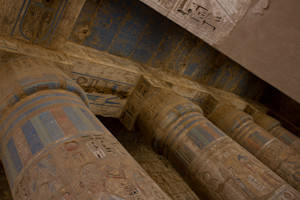 Many of its pillars and several smaller sanctuaries retain their bright colours, giving an idea of how very, very ghetto-fabulous the original would have looked.
Many of its pillars and several smaller sanctuaries retain their bright colours, giving an idea of how very, very ghetto-fabulous the original would have looked.
The format of pylons, courts, colonnades and side chapels is fairly typical, but there are the remains of a small palace beside the temple, where a few members of the royal family could rest and sleep during major ceremonies.
As almost nothing remains of the pharaohs’ elaborate mudbrick palaces and opulent gardens, this palace alone would make Medinat Habu is really special. With a zen little cafe opposite, and only a few very desultory guides on site, it is an absolutely perfect place for a wander.
9: Luxor Temple by Night
By about 9.30pm most tourists have finished eating, the touts have finished work and ordinary Egyptians are thinking about dinner, transforming Luxor from tourist hell into a fairly normal Egyptian city.
This, or later, is the absolutely perfect time to take a walk beside Luxor Temple, its enormous columns illuminated, with a cool breeze off the Nile, with nary a felucca captain in sight.
10: Aboudy Bookshop
With sofas to lounge on and blissful A/C, plus an absolutely excellent selection of books on Egypt in general and Luxor in particular, second-hand and new fiction, guidebooks and maps, we spent several happy hours in this spacious, gorgeous bookstore. It’s just off Sharia Khalid ibn-Al Walid, close to the Steigenberger Hotel, and a little oasis of calm.
This is, as ever, a highly subjective take on Luxor. One trained architect has a different selection of picks.
Have you been to Luxor? What were your favourites?

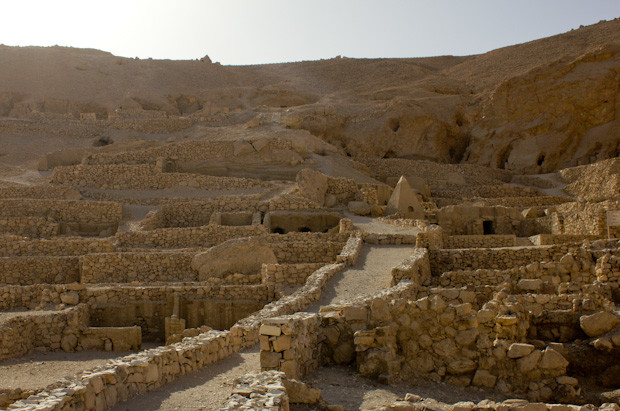

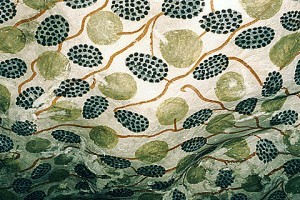
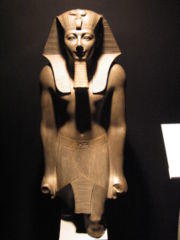


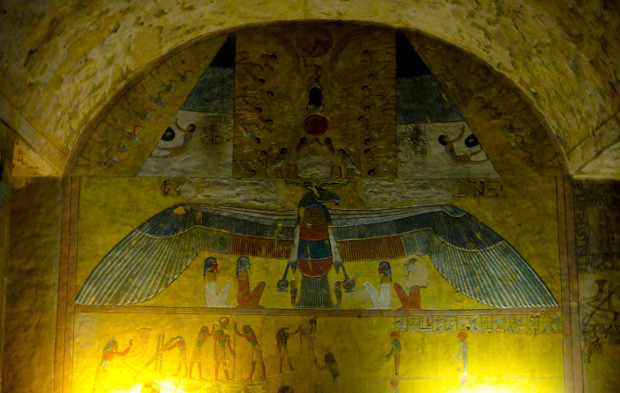
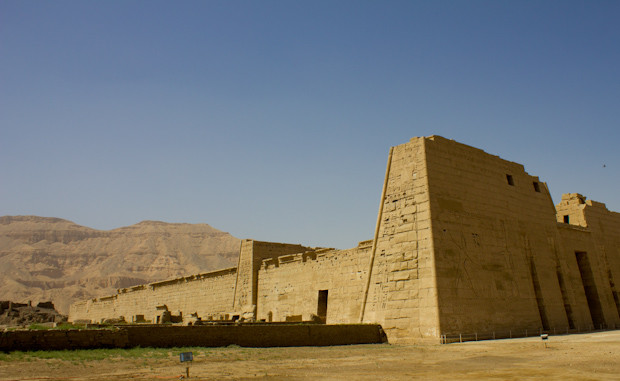
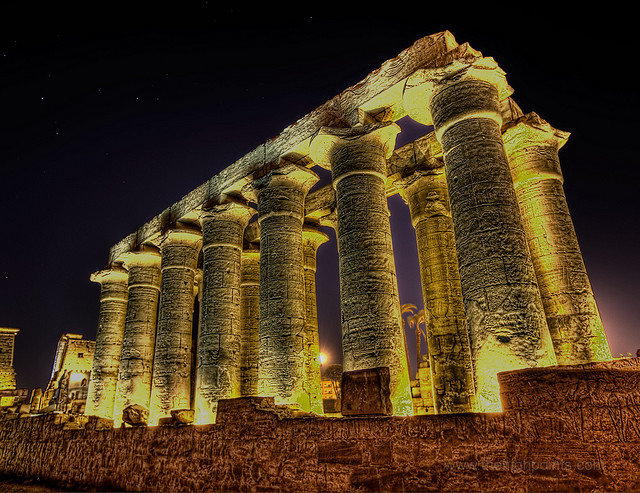
Seriously T, I am so impressed that you and Z have done this trip. For a while I was on a “Egypt Fiction” kick and a bunch of the books I was reading were based in the age of exploration and were about spending months in Egypt uncovering the tombs. But, to actually get to spend more than a day at the sights. Pretty cool.
I highly, highly recommend it. You do need to take the sights at your leisure, and read quite a bit around them, which you clearly have, but it is so worthwhile to actually see them for real. There is a jaw on the floor moment with the pyramids, that’s repeated with your first temple — and some of these are absolutely amazing. It really does make all the hassle worthwhile.
It’s all stunning!!
What I found so interesting was that my Egyptian tour guide commented that Egyptians generally think all these are “just a bunch of insignificant stones”. That made a part of me wonder — why are these so important?
I ask also because I’ve noticed that in America, often, we raze down so much that seems unimportant today…
Funny, we’re about to go and see a temple that was dynamited for building purposes as late as 1896.
Part of it is that most Egyptians consider themselves a separate people to the ancients — descended from Arabs, rather than the old society. Another element is that there is simply so much history here, why bother?
Votre blog est une excellente source d’information sur Luxor. Je n’avais encore rien lu de pareil. Merci, Stefan !